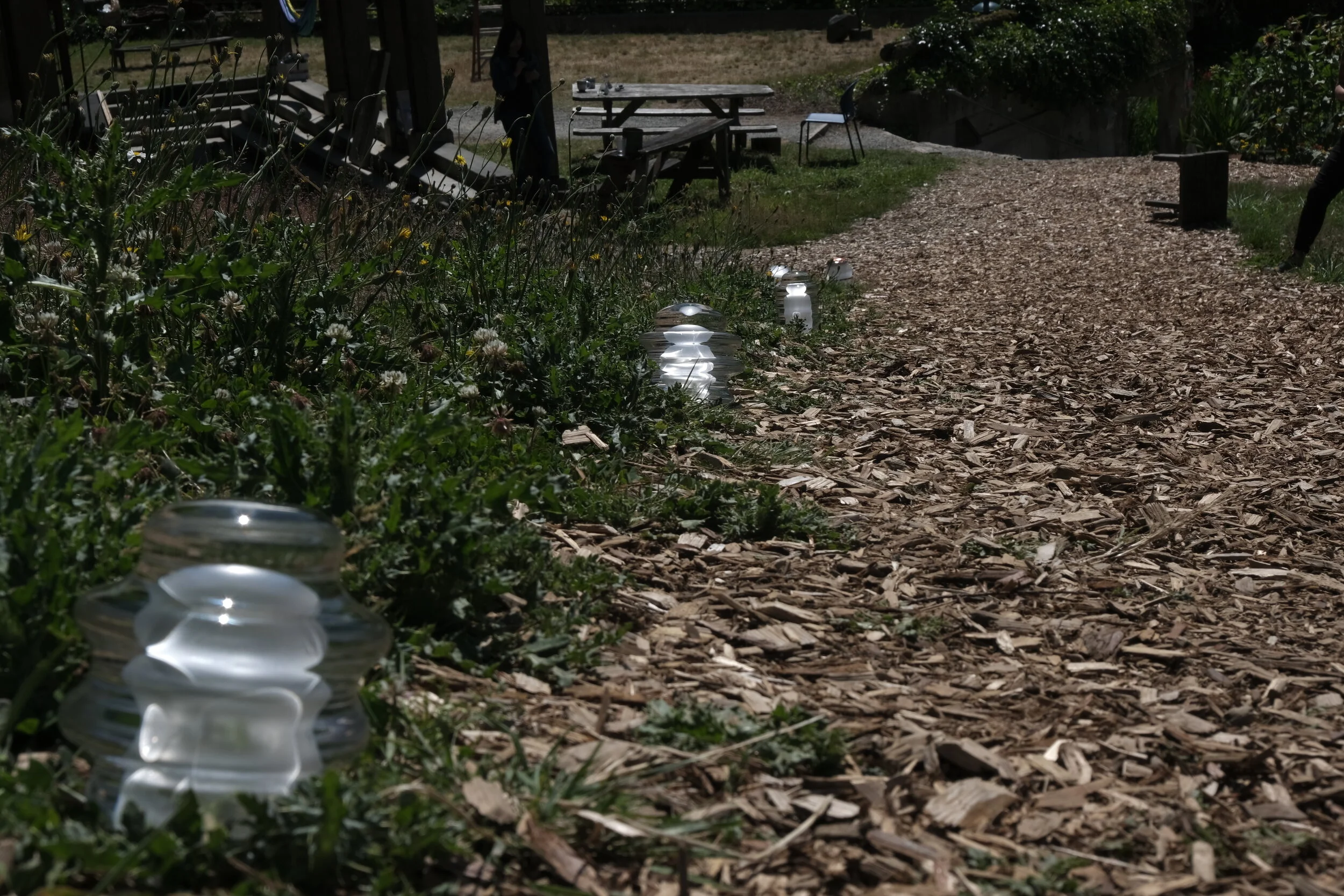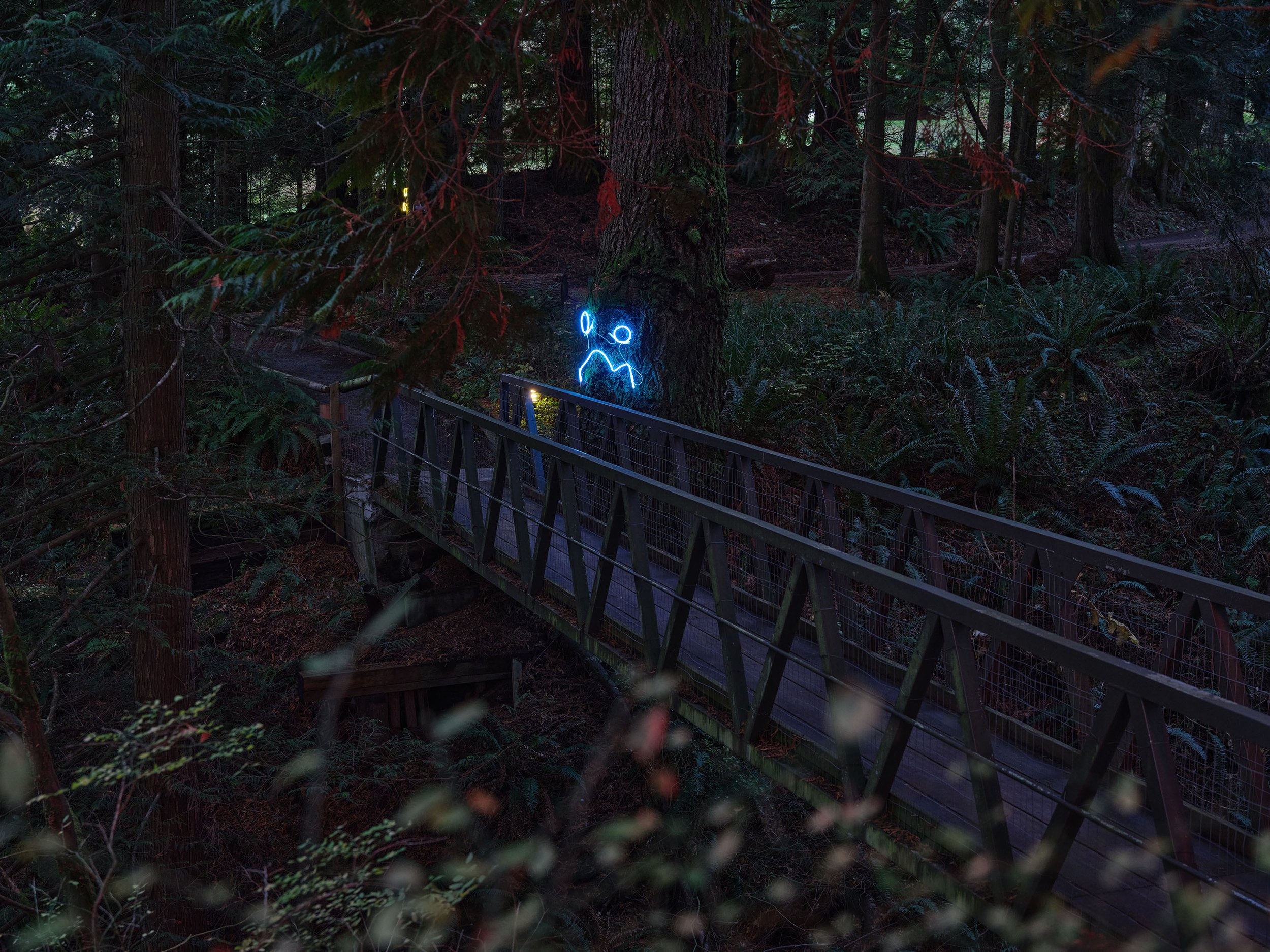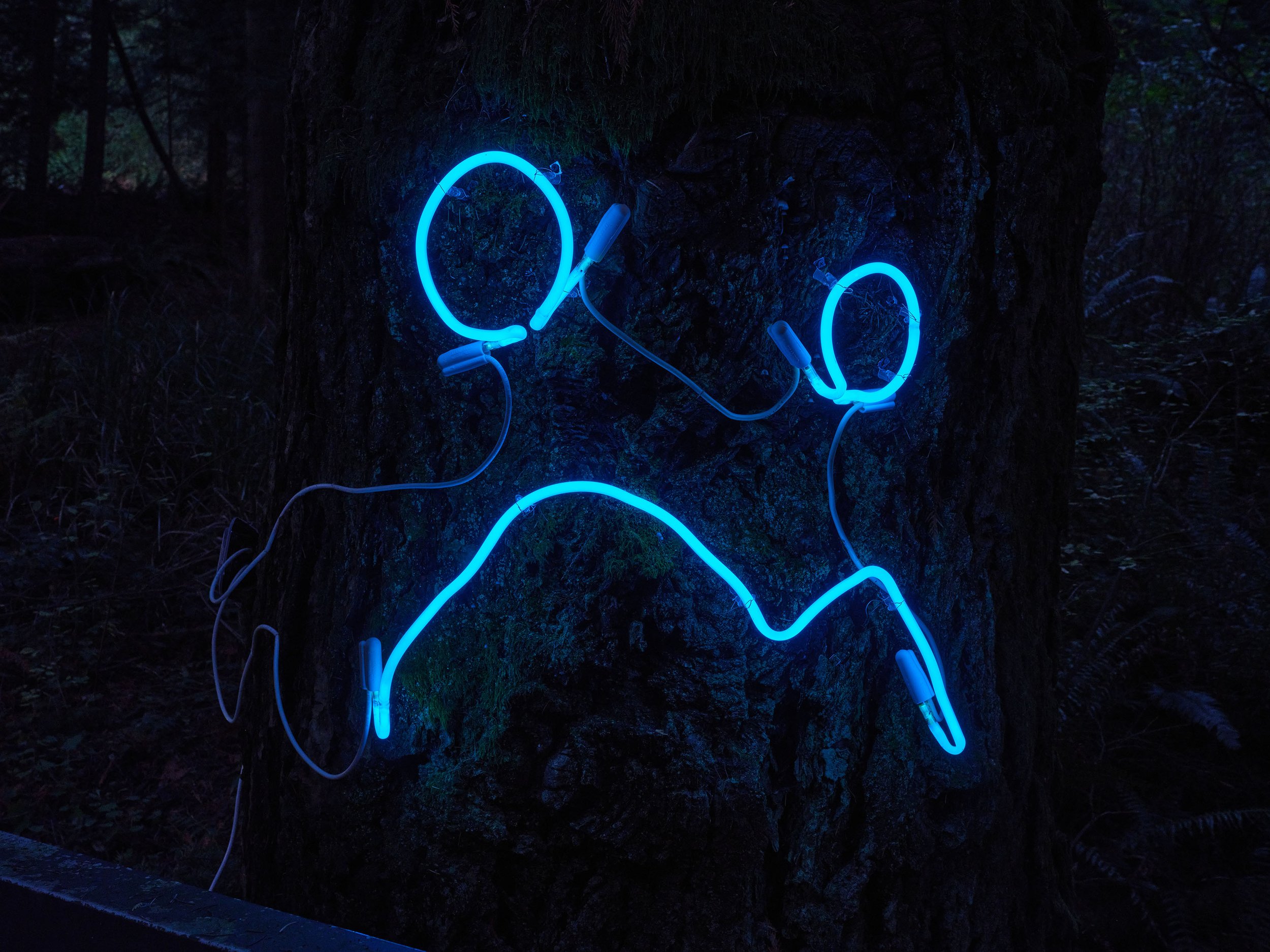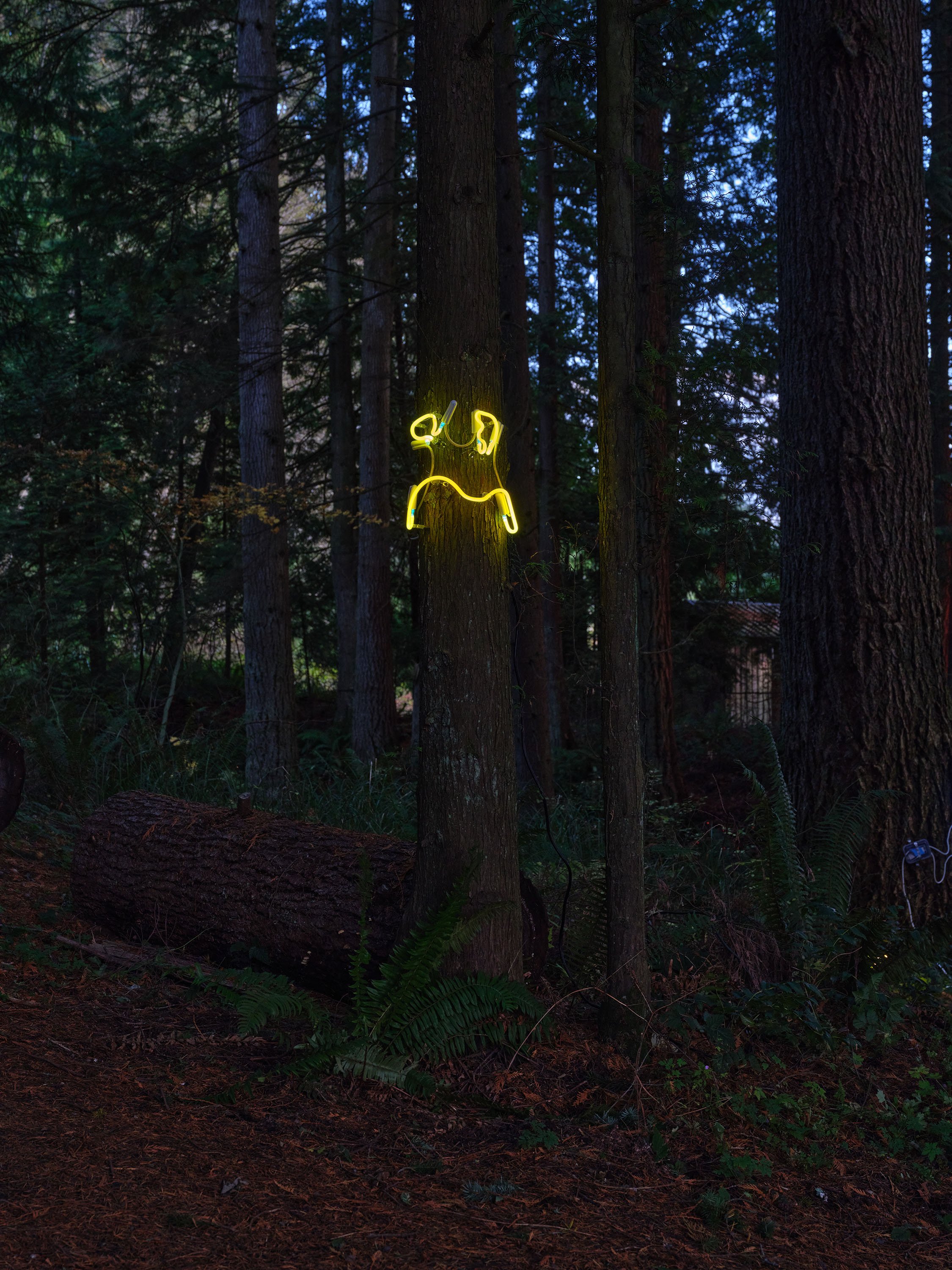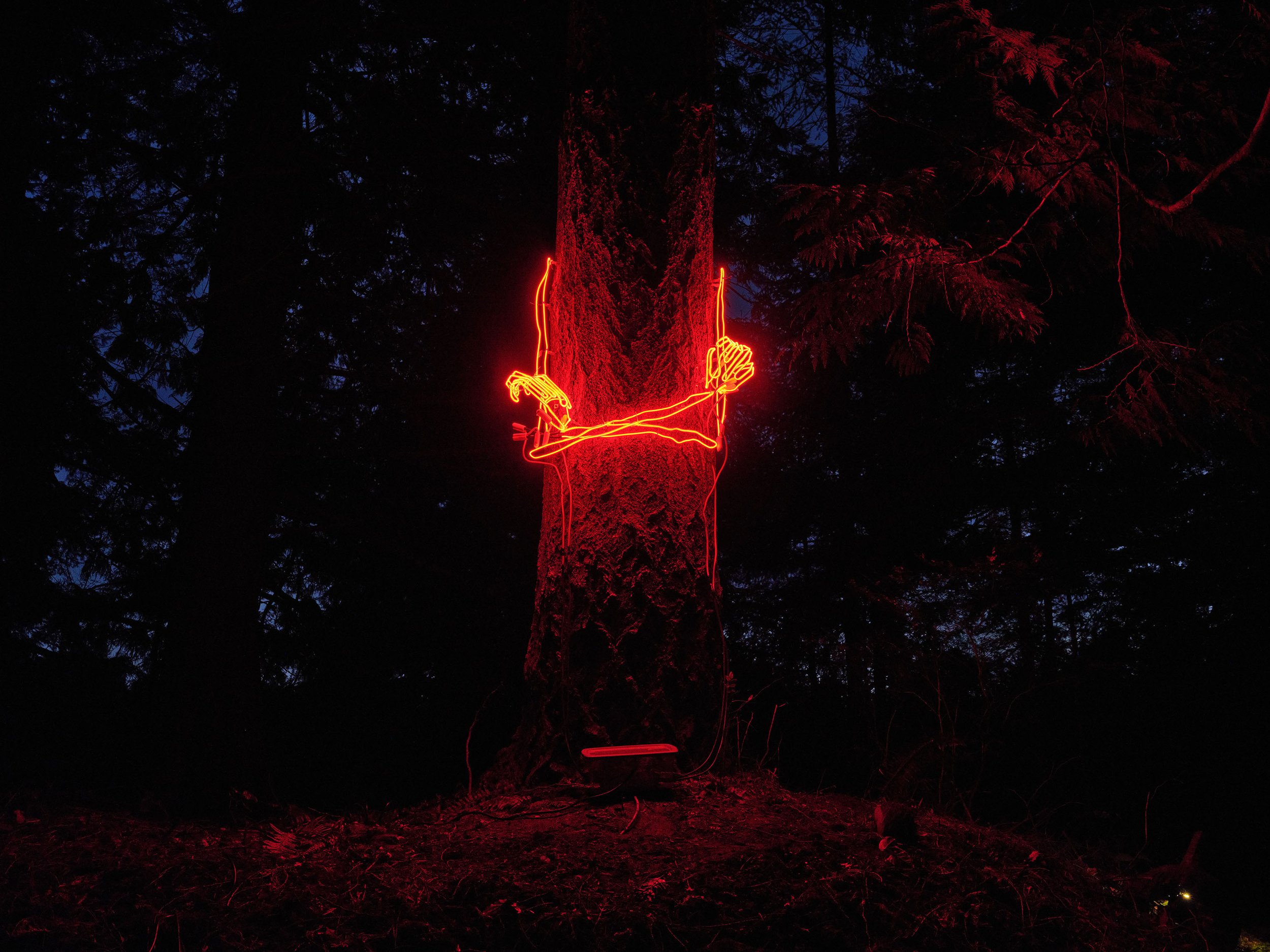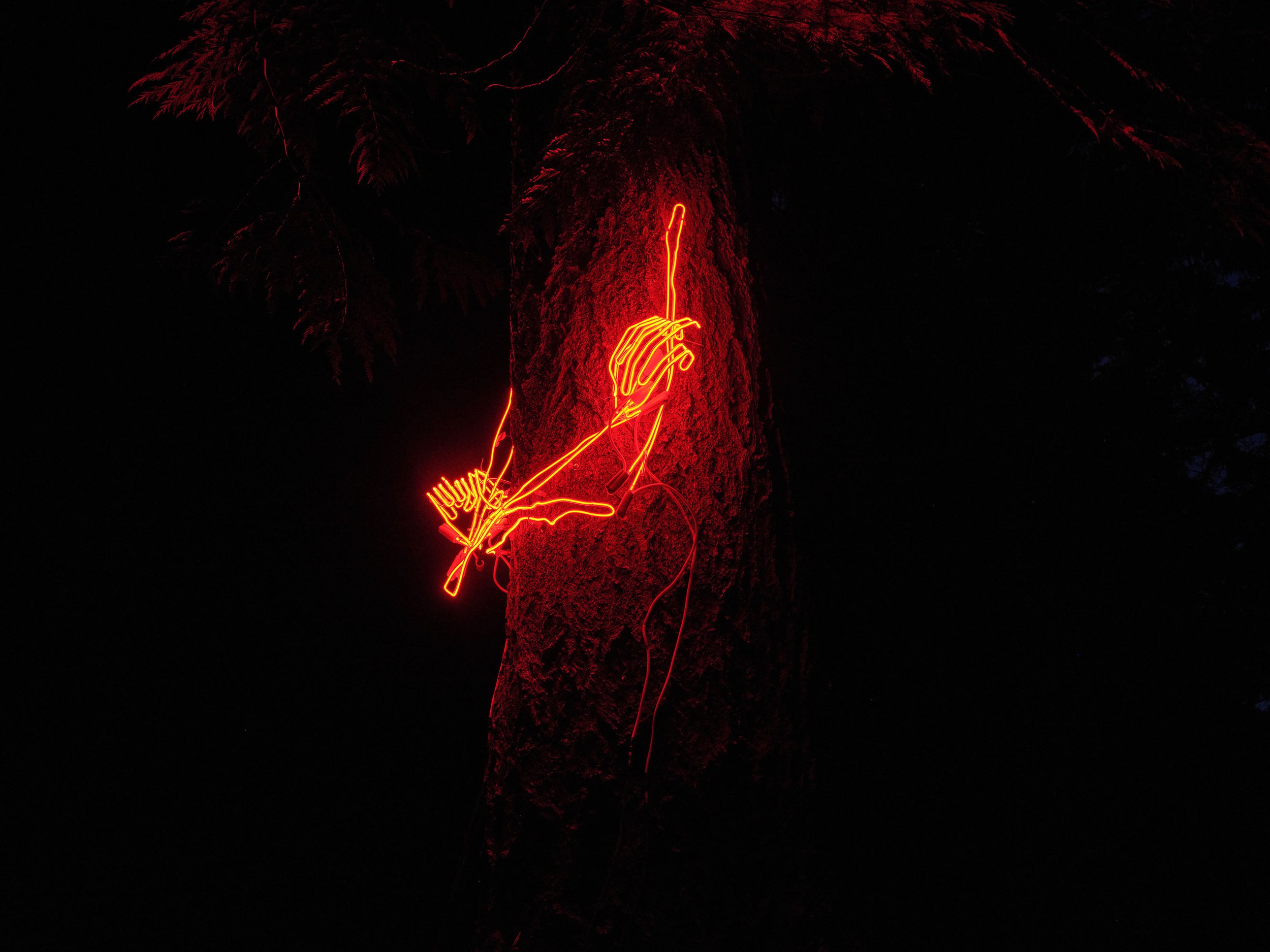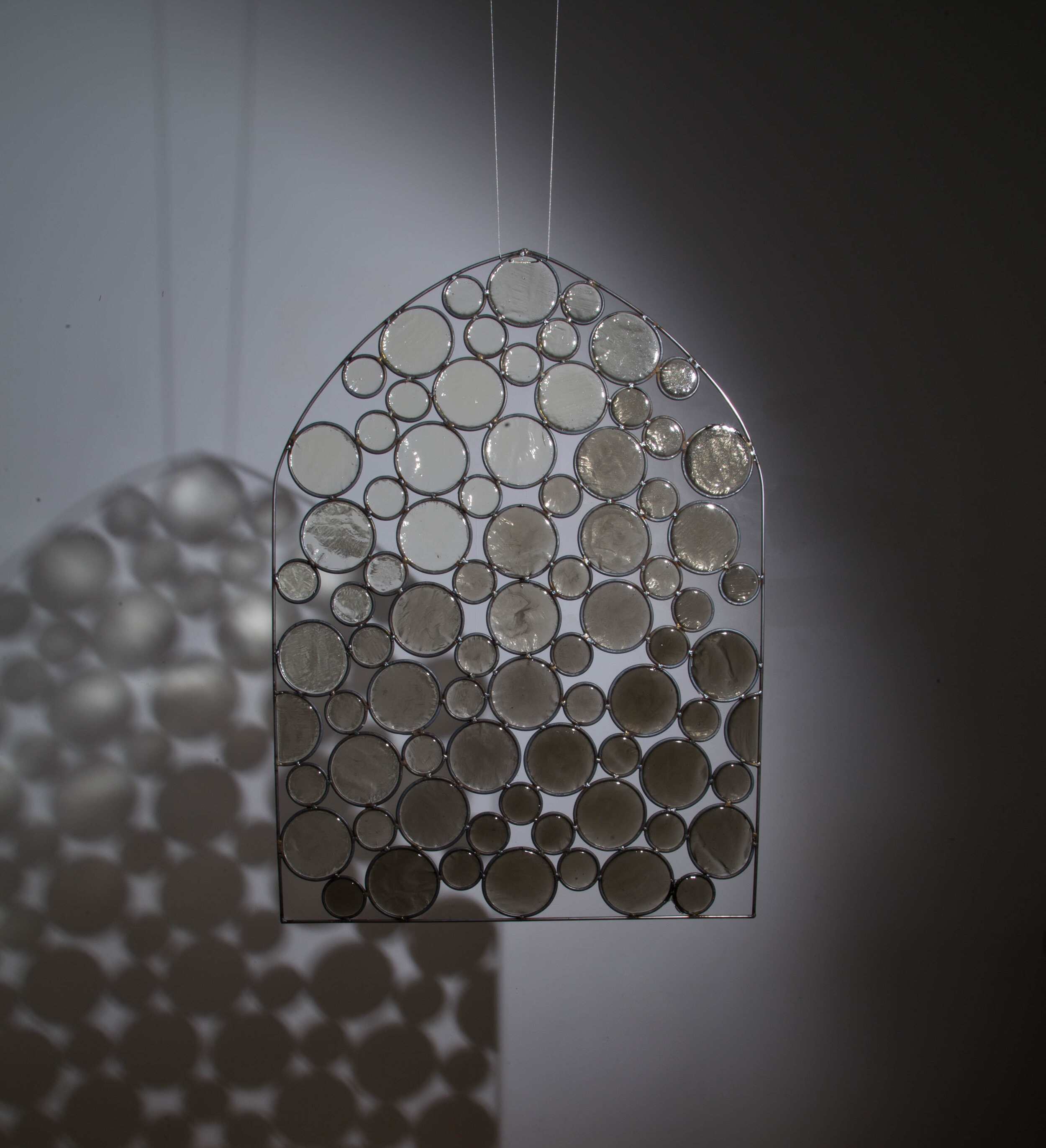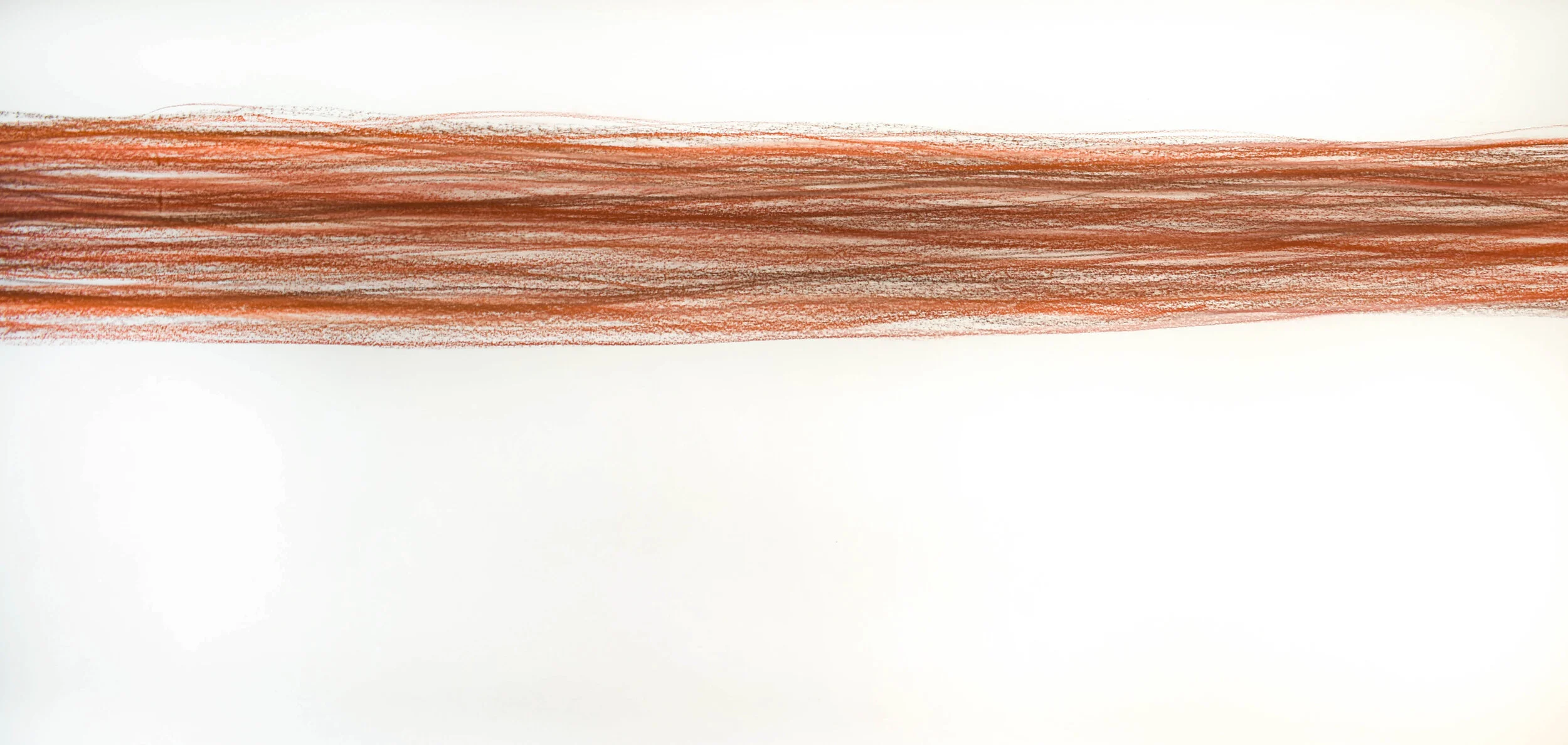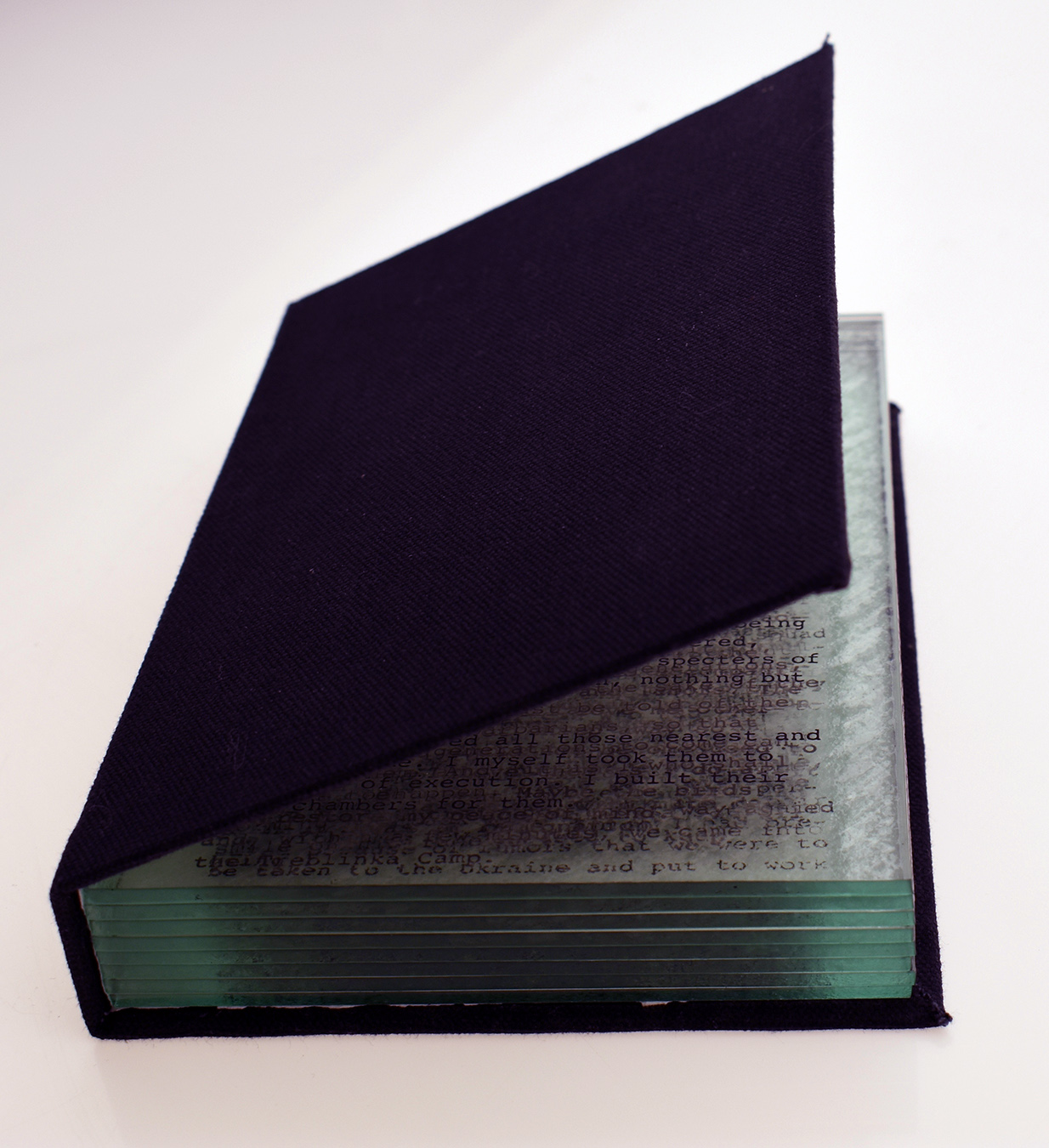“To think is to go beyond. The best thing about religion is that it creates heretics.” -Ernst Bloch
In a scene from the Simpsons an apocalyptic event takes place. A church and a bar are next door to each other and the people in the church run outside into the neighboring bar and the people in the bar run into the church. This humorous moment in a cartoon encapsulates how we seek solace in times of turmoil, and is also the image I return to for my new body of work titled “False Profit/Prophet.”
While in residence at Mini Mart City Park, I will be fabricating the installation and lighting for a group of works that together make up “False Profit/ Prophet.” This series draws inspiration from both the sign industry and traditional stained-glass windows to investigate the intersection of desire, fear and belief.
Though seemingly disparate and anachronistic, neon signs and stained-glass windows share commonalities; drawing the viewer in through color and light. Stained-glass historically served the purpose of portraying biblical narratives to a largely illiterate mass. Until the printing press was invented in 1439, copies of the Bible were reserved for religious officials. Sometimes referred to as the “poor man’s Bible,” these stained-glass church windows served as a guide for people’s belief and education and as a means of authority for the church.
In secular and late stage Capitalist fashion, neon signage serves an ominously similar purpose; directing people to bars, clubs, wedding chapels, casinos, and places to spend their money. The body of work will operate on multiple levels; superficially, creating colorful eye candy to draw in viewers through the optical qualities of light, colored acrylic and electricity. On a deeper level, the work is connecting past to present and considering the way systemic hierarchies of power exploit people’s most basic desires and fears.
“What do you pay homage to? What do you reject? What do you spend your time worshiping (your phone, money, material goods)? What barriers do you draw between yourself and the sacred? Perhaps there is room on your altar for something new, something surprising. Offer it to the heavens.” -Kim Krans







